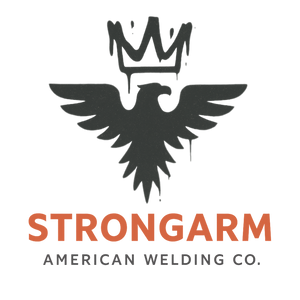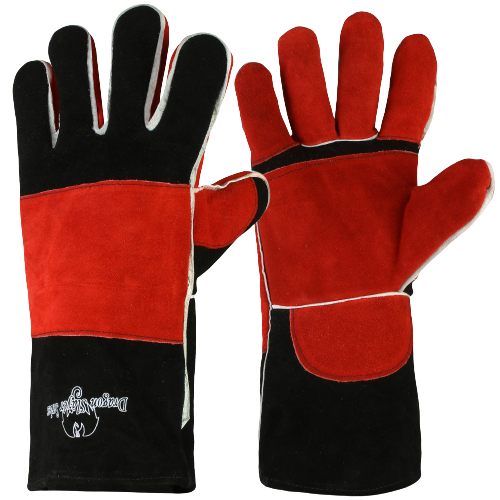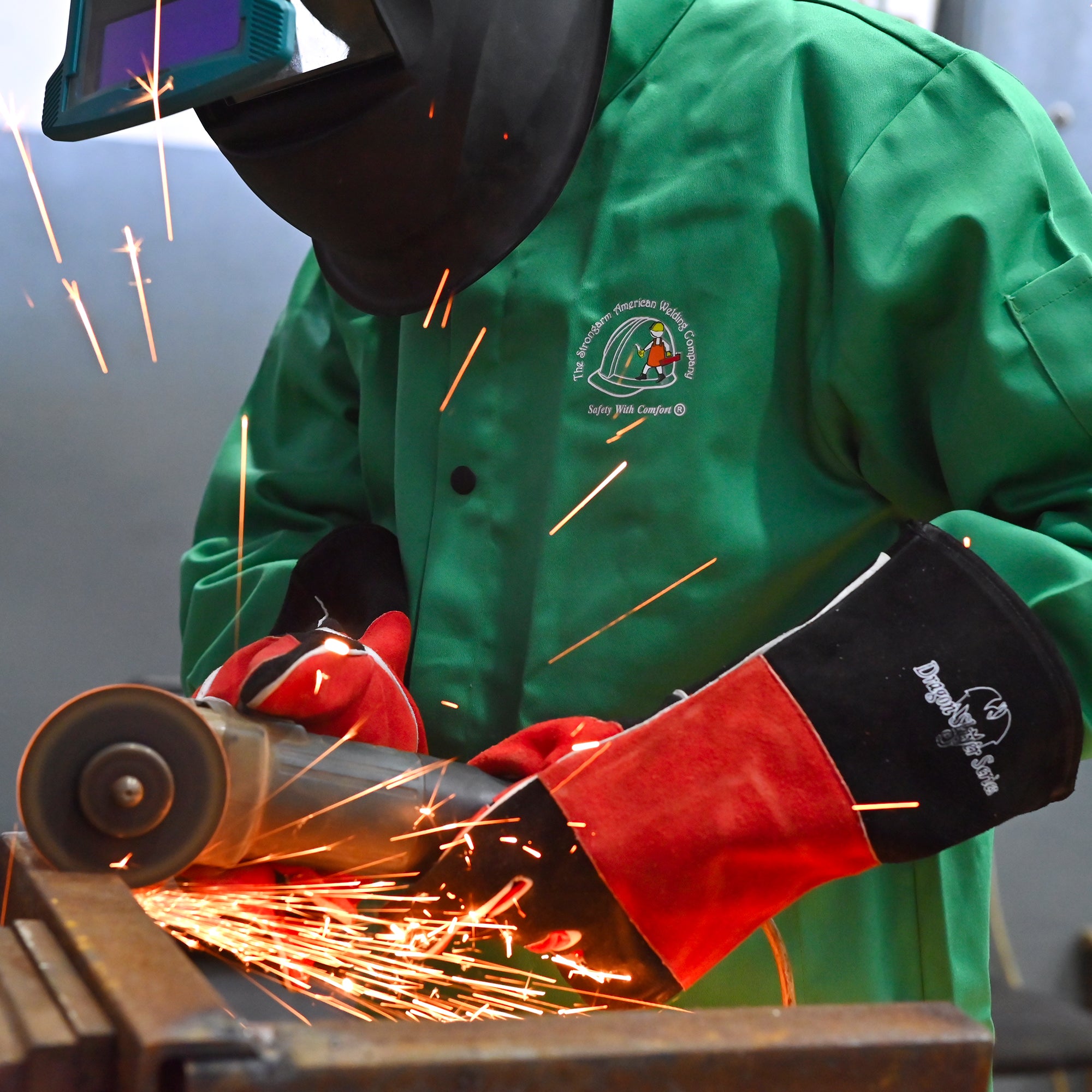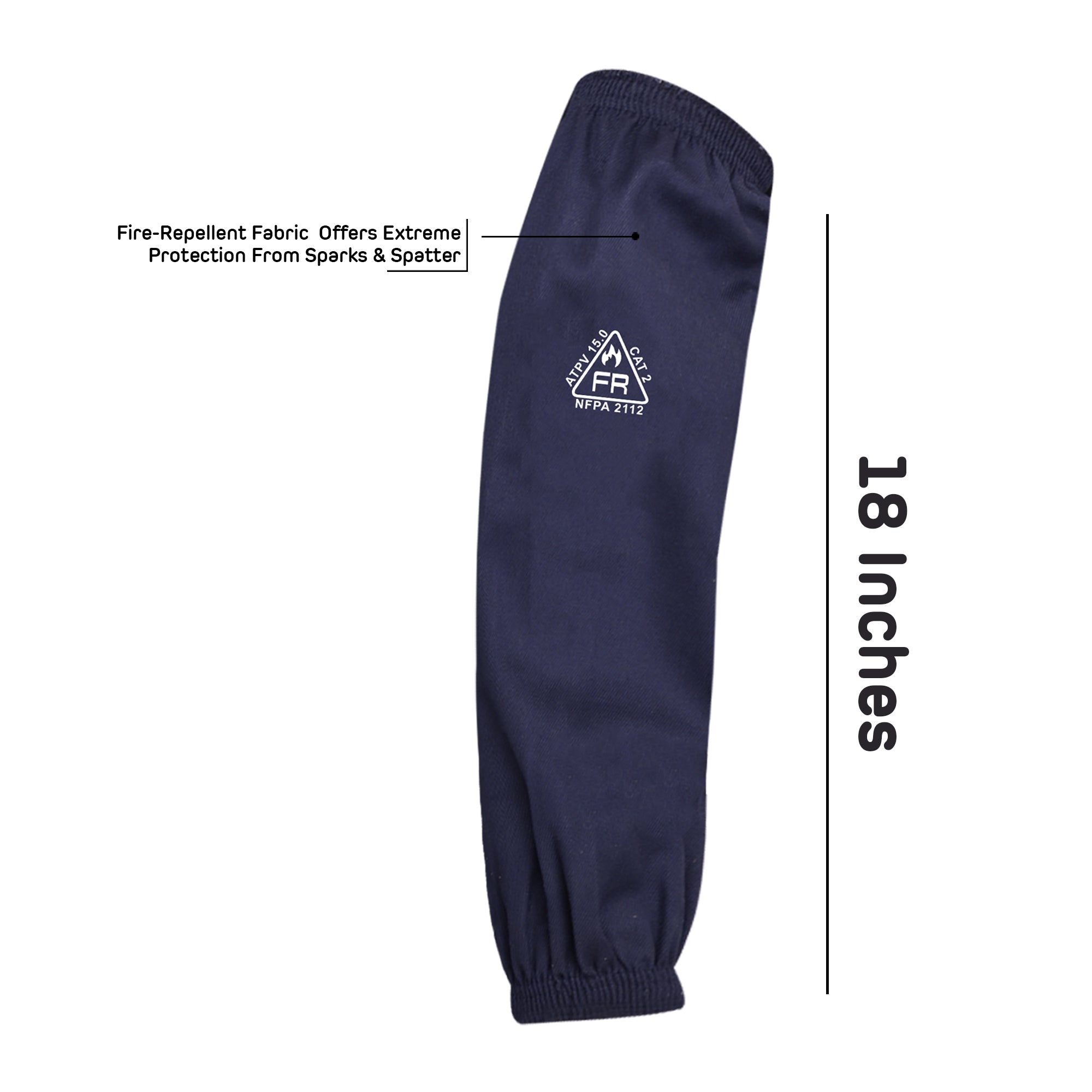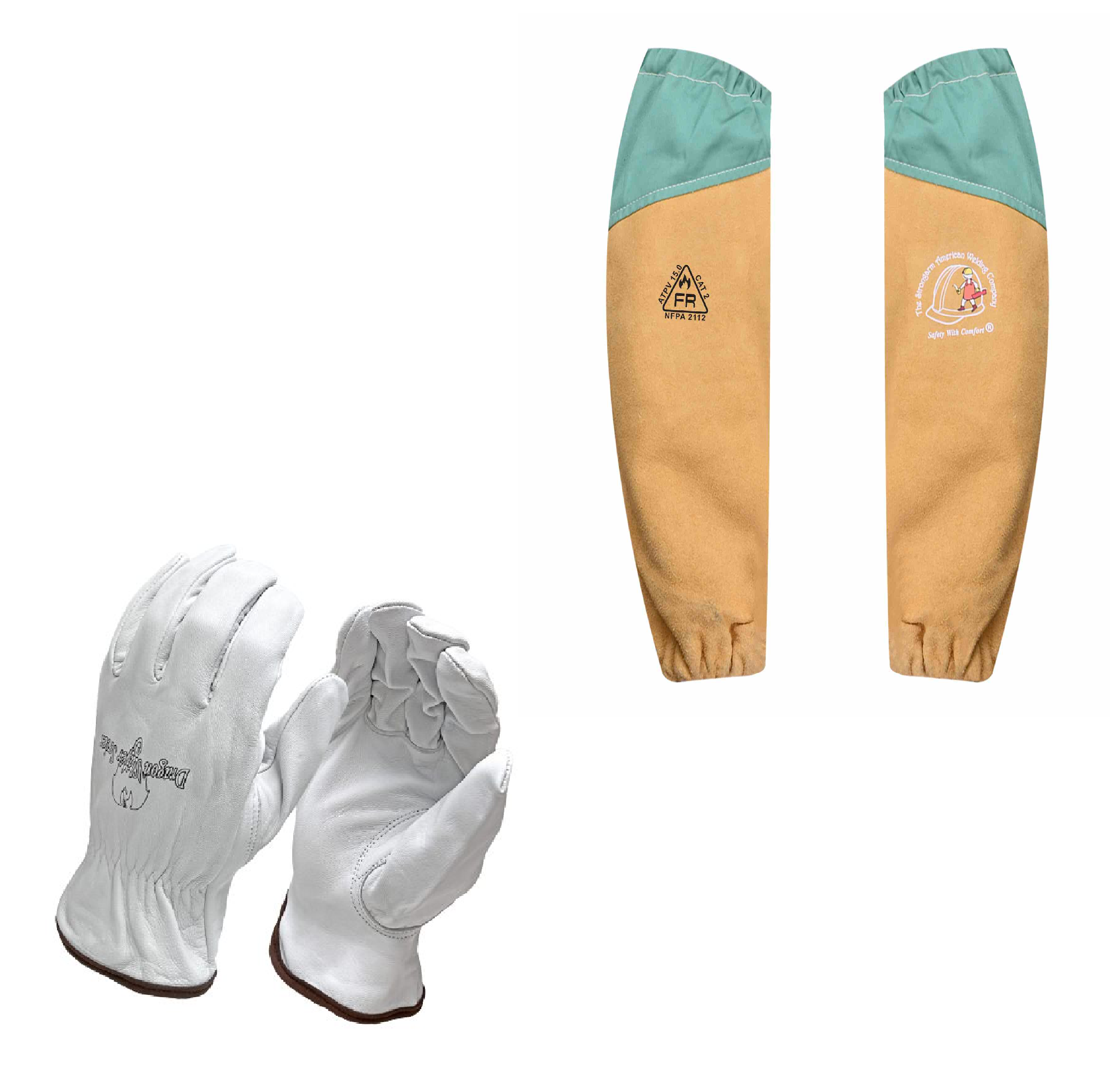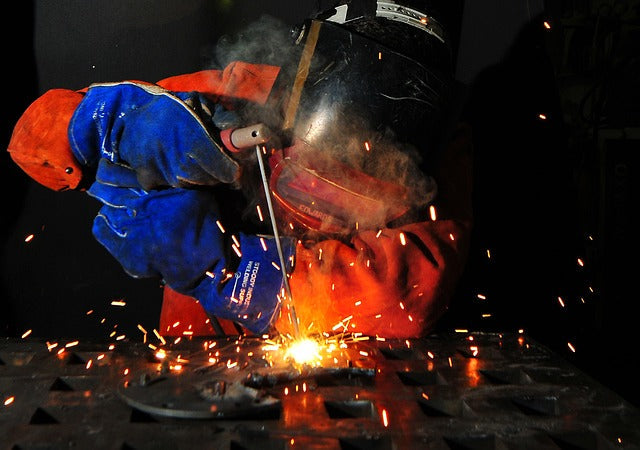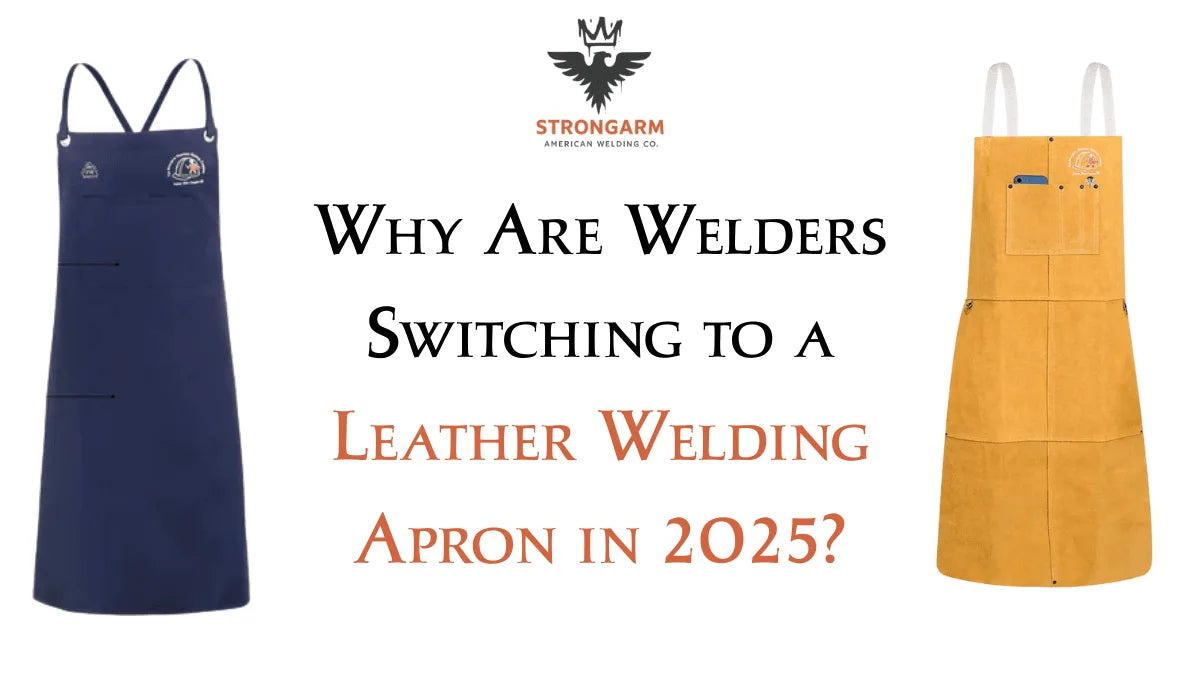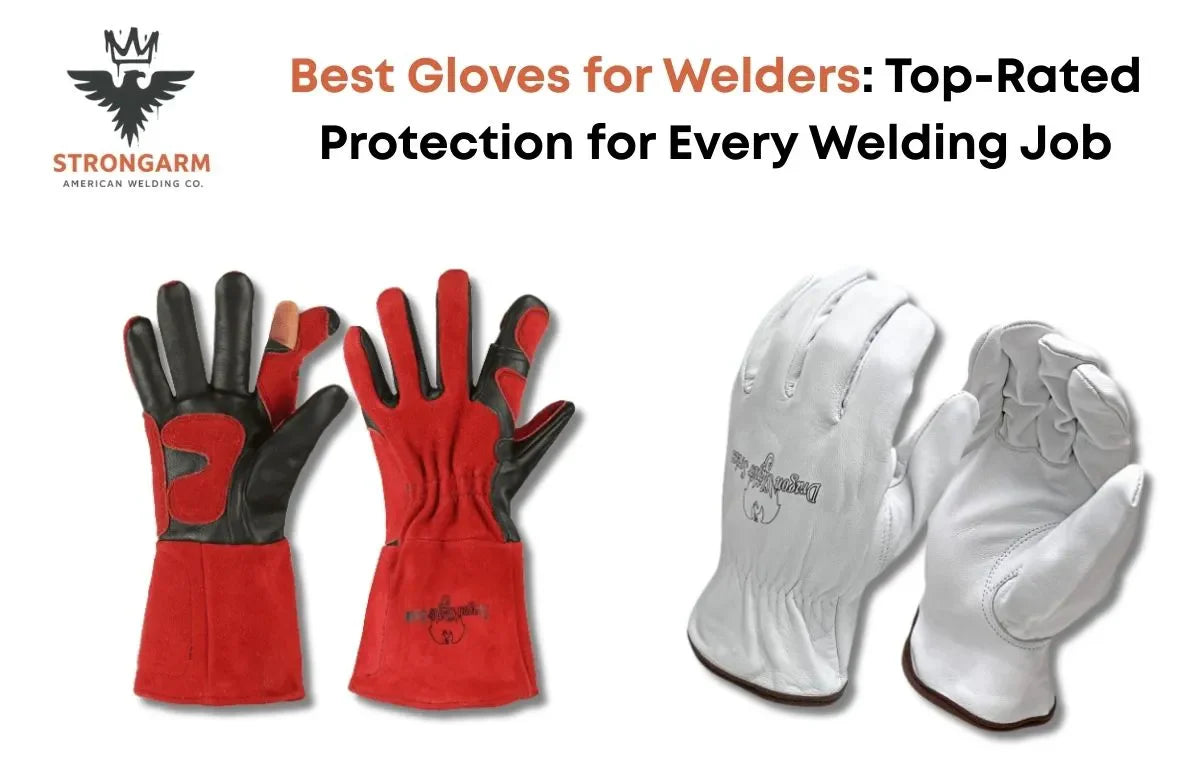When it comes to welding, protecting yourself is crucial. Welding sleeves are essential to a welder's protective gear, providing coverage and protection for the arms while working. This welding sleeve buying guide will provide welding sleeve quality tips for evaluating the quality of welding sleeves and selecting the right fit for your needs. Finding the best welding sleeves can enhance safety and comfort, and make the whole experience safe.
Importance of Welding Sleeves
Welding sleeves protect your arms from welding hazards. They are made from materials that can withstand high temperatures and resist sparks and spatter. Welding sleeves protect your arms from the heat generated during welding, preventing burns. They also guard against sparks and molten metal that can cause serious injuries. Welding sleeves provide a barrier against sharp objects and rough surfaces, reducing the risk of cuts and abrasions.
Key Factors to Consider How to Choose Welding Sleeves
Choosing the best welding sleeves is essential for ensuring safety, comfort, and efficiency while welding. Here are the key welding sleeve quality tips to consider:
1. Material Quality
- Leather: Ideal for heavy-duty welding due to its excellent heat resistance and durability. However, it may be less flexible and heavier.
- Kevlar: Known for its high resistance to heat and cuts, Kevlar is lightweight and provides good flexibility, making it suitable for various welding tasks.
- Cotton and Denim: Treated with flame-resistant coatings, these materials are breathable and comfortable for light to medium welding tasks. However, they offer less protection than leather and Kevlar.
- Combination Materials: Some sleeves combine welding sleeve materials like leather and Kevlar to offer enhanced protection and flexibility.
2. Durability
Durability is an optimal characteristic in a welding sleeve, as they must withstand harsh conditions. Look for durable welding sleeves with reinforced stitching and high-quality materials that can endure prolonged use without significant wear and tear.
3. Heat Resistance
Ensure the sleeves can withstand the temperatures typical of your welding tasks. Higher heat resistance is crucial for functions involving prolonged exposure to high temperatures.
4. Comfort and Fit
Look for sleeves with adjustable straps or elastic bands to ensure a secure and comfortable fit. Choose sleeves that adequately cover your arms and overlap with your gloves to prevent exposure. Lightweight sleeves are preferable for tasks requiring high mobility, while heavier sleeves offer more protection for intensive tasks.
5. Flexibility and Mobility
You should opt for sleeves that provide a good range of motion. Materials like Kevlar and treated cotton offer better flexibility than heavy leather. Ensure the sleeves do not restrict your movements, which could impact your welding task.
6. Breathability
Welding can be hot and sweaty work, so check whether the welding glove is breathable. Look for materials that allow airflow to keep you cool and comfortable.
7. Protection Against UV Radiation
Welding generates UV radiation, which can cause skin burns. Ensure the sleeves offer protection against UV rays to prevent skin damage.
8. Ease of Maintenance
Consider how easy it is to clean and maintain the sleeves. Leather sleeves may require special care, while cotton and denim sleeves can usually be machine-washed. Always follow the manufacturer’s care instructions to maintain the integrity of the sleeves. Regularly clean the sleeves to remove debris and inspect them for signs of wear. Furthermore, proper storage in a cool, dry place away from sunlight and chemicals will prolong their lifespan.
9. Cost vs. Value
While it’s tempting to go for cheaper options, investing in higher-quality sleeves can save money in the long run by lasting longer and providing better protection.Consider the cost as an investment in your safety and comfort.
Evaluating Quality
Ensure you are investing in high-quality best welding sleeves, pay attention to the following aspects:
Brand Reputation
Reputable brands are more likely to produce high-quality products. Research different brands and read reviews from other users to gauge the reliability and performance of their welding sleeves. Brands like Strongarm, Miller, Lincoln Electric, Steiner, and Tillman are known for their quality welding gear.
Certifications and Standards
Check if the welding sleeves meet industry standards and certifications, such as ANSI (American National Standards Institute) or ASTM (American Society for Testing and Materials). Certified products have undergone rigorous testing to ensure they provide adequate protection.
Customer Reviews and Feedback
Customer reviews and feedback can provide valuable insights into the welding sleeves' performance and durability. Look for reviews that highlight the sleeves' heat resistance, comfort, and overall quality.
Material Quality
Examine the quality of the materials used in the sleeves. High-quality leather is thick and supple. A high-quality Kevlar should be tightly woven and free from defects. The aluminized fabric should have a reflective surface that is not easily damaged.
Construction and Stitching
The construction and stitching of the sleeves play a significant role in their durability. Double-stitched seams and reinforced areas indicate a well-constructed sleeve. Avoid loose threads or uneven stitching, as these may not hold up well under stress.
Tips for Selecting the Right Fit
Finding the right fit is crucial for both protection and comfort. Here is a welding sleeve buying guide to help you select the perfect fit:
1. Measure Your Arms
Before purchasing welding sleeves, measure the length and circumference of your arms. Use these measurements to find sleeves with the right length and a snug fit around your arms.
2. Try Them On
If possible, try on the welding sleeves before buying. Ensure they fit comfortably and do not restrict your movements. Pay attention to the fit around the wrists and upper arms to avoid gaps that could expose your skin to hazards.
3. Adjustable Features
Look for sleeves with adjustable features such as straps, buckles, or elastic cuffs. These features allow you to customize the fit for better comfort and security.
4. Consider Layering
If you wear additional layers of protective clothing, consider how the welding sleeves will fit over or under these layers. Ensure the sleeves are not too tight or loose when layered with other gear.
5. Test for Mobility
Move your arms and perform common welding motions to test the sleeves' flexibility and mobility. Ensure that the sleeves do not hinder your ability to work effectively.
Conclusion
Investing in high-quality best welding sleeves is essential for your welding safety and comfort. By considering welding sleeve quality tips such as material, heat resistance, durability, fit, and compatibility with other protective gear, you can select the perfect welding sleeves for your needs. Pay attention to brand reputation, certifications, customer reviews, and the quality of materials and construction to ensure a reliable product. With the right welding sleeves, you can confidently focus on your work, knowing that your arms are well protected.
If you are looking for a high-quality welding sleeve, StrongArm should be your first choice. Strongarm is the leading welding manufacturer and provider in America. We have a team of trusted professional welders offering a wide range of welding aprons and gears to suit your needs. Contact us today for all your weldings essentials.
